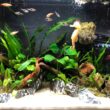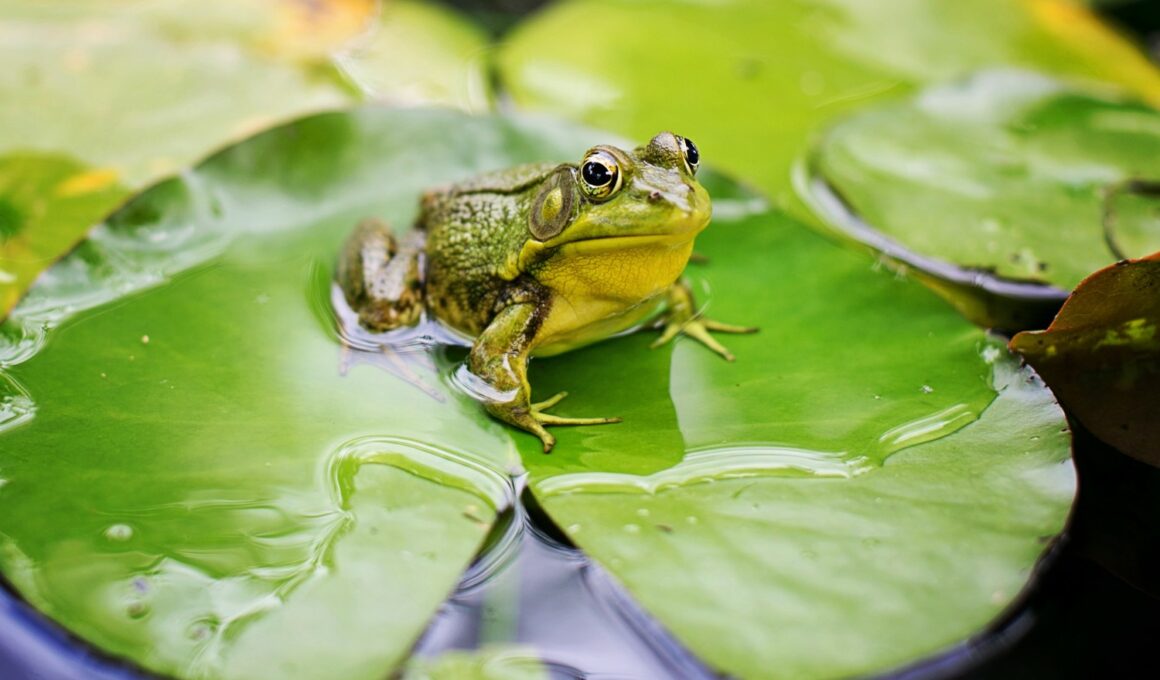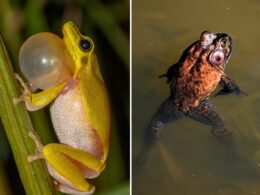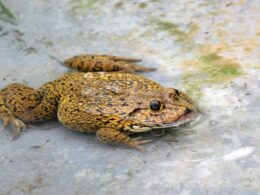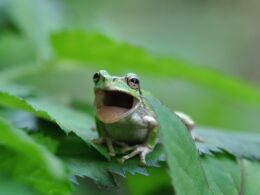In this article Show
Have you ever sat by a pond and watched frogs leap from one lily pad to another, wondering what’s happening in their amphibious world? If so, you’re not alone. Frogs have a fascinating way of interacting with their environment, especially when it comes to what they jump on in the water.
Frogs don’t just randomly leap onto any floating object. Each jump serves a purpose, whether it’s a rock, a log, or the iconic lily pad. Understanding what frogs jump on in water can offer valuable insights into their behavior, ecology, and well-being if you have a pet frog.
In this post, we’ll delve into the various surfaces and objects that frogs prefer to jump on in the water and explore the reasons behind these choices. Whether you’re a casual observer, a concerned pet owner, or an avid nature enthusiast, there’s something here to learn.
What Do Frogs Jump On In Water?
No, frogs do not typically jump on objects in water. In their natural habitat, frogs use their powerful legs to swim and maneuver through water rather than jumping on objects. They are adept swimmers and use their limbs to propel themselves. While on land, frogs jump on various surfaces to move around or escape predators.
What Do Frogs Jump On?
If you’ve ever watched frogs, you’ll notice they’re quite selective about where they jump. It’s not just a random hop; there’s a method to the madness. Let’s break down some of the most common objects frogs jump on in their aquatic homes.
1. Rocks and Stones
Rocks and stones are more than just inanimate objects in a frog’s world. They serve as excellent platforms for sunbathing, foraging, and even mating. Frogs often leap onto rocks that protrude above the water, giving them a vantage point to spot both prey and predators.
Benefits and Risks
While rocks offer a solid landing spot, they also come with risks. A slippery rock can lead to a missed jump, and some rocks may be too hot from the sun, causing discomfort.
2. Lily Pads
Ah, the lily pad—the poster child of frog habitats. Lily pads offer a stable yet floating platform that allows frogs to rest and move with the water’s flow. They’re also great for camouflage, blending in with the green surroundings.
Why Lily Pads are Favorable
Lily pads are not just picturesque; they’re practical. Their broad, flat surfaces make it easy for frogs to balance, and their buoyancy allows for quick escapes by simply diving into the water.
3. Logs and Driftwood
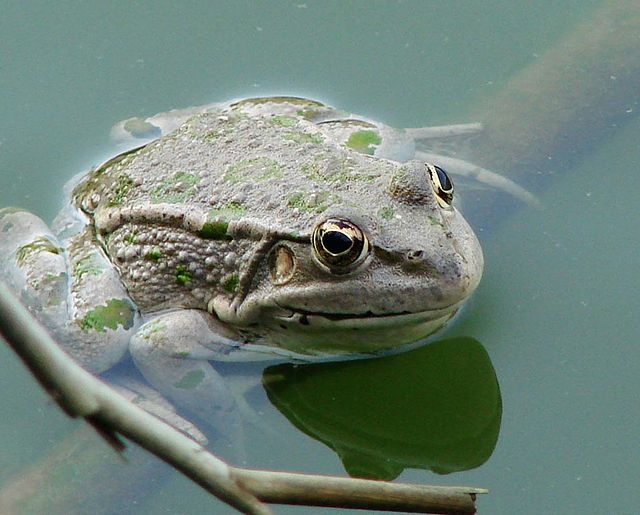
Logs and pieces of driftwood serve as another popular jumping destination. They offer a textured surface for better grip and often come with the added bonus of being partially submerged, providing both a dry and wet environment.
Importance of Logs and Driftwood
Logs are like the multipurpose furniture of the frog world. They’re good for basking, and hiding, and they even serve as a launching pad for catching flying insects.
4. Aquatic Plants
Aside from lily pads, other aquatic plants like reeds and rushes provide additional jumping options. These plants often grow in clusters, creating a network of potential landing spots.
Common Types of Plants Include
Frogs are known to use plants like cattails, water hyacinths, and even tall grasses that grow near the water’s edge. These plants offer both concealment and a high vantage point for spotting prey.
Why Do Frogs Jump on These Objects?
Understanding what frogs jump on is just half the story. The other half is figuring out why they make these choices. Let’s explore some of the primary reasons.
1. Foraging for Food
One of the main reasons frogs jump onto various objects is to forage for food. Elevated platforms like rocks and logs give them a better view of potential prey, such as insects and small fish. A well-timed leap can result in a successful catch.
2. Avoiding Predators
Frogs are well aware that they’re not at the top of the food chain. Jumping onto objects like lily pads and aquatic plants can offer a quick escape route. The floating nature of these platforms allows frogs to dive into the water if a predator approaches, making it harder for them to be caught.
3. Rest and Relaxation
Sometimes, a frog just needs a break. Objects like logs and rocks offer a stable place for frogs to rest and soak up some sun. This is especially important for regulating their body temperature and conserving energy for other activities.
Final Thoughts
We’ve taken a deep dive into the world of frogs, exploring what they jump on in water and why they make these specific choices. Each object serves a unique purpose in the frog’s daily life, from rocks and lily pads to logs and aquatic plants.
Understanding these behaviors satisfies our curiosity and has important implications for conservation efforts.




